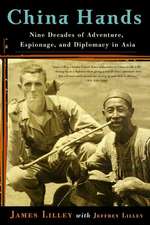The Sugar Plantation in India and Indonesia: Industrial Production, 1770–2010: Studies in Comparative World History
Autor Ulbe Bosmaen Limba Engleză Paperback – 31 aug 2016
| Toate formatele și edițiile | Preț | Express |
|---|---|---|
| Paperback (1) | 289.57 lei 6-8 săpt. | |
| Cambridge University Press – 31 aug 2016 | 289.57 lei 6-8 săpt. | |
| Hardback (1) | 697.62 lei 6-8 săpt. | |
| Cambridge University Press – 6 oct 2013 | 697.62 lei 6-8 săpt. |
Preț: 289.57 lei
Nou
Puncte Express: 434
Preț estimativ în valută:
55.42€ • 57.64$ • 45.75£
55.42€ • 57.64$ • 45.75£
Carte tipărită la comandă
Livrare economică 14-28 aprilie
Preluare comenzi: 021 569.72.76
Specificații
ISBN-13: 9781316621165
ISBN-10: 1316621162
Pagini: 336
Ilustrații: 9 b/w illus. 2 maps
Dimensiuni: 152 x 228 x 20 mm
Greutate: 0.49 kg
Editura: Cambridge University Press
Colecția Cambridge University Press
Seria Studies in Comparative World History
Locul publicării:New York, United States
ISBN-10: 1316621162
Pagini: 336
Ilustrații: 9 b/w illus. 2 maps
Dimensiuni: 152 x 228 x 20 mm
Greutate: 0.49 kg
Editura: Cambridge University Press
Colecția Cambridge University Press
Seria Studies in Comparative World History
Locul publicării:New York, United States
Cuprins
Introduction; 1. Producing sugar for the world; 2. East Indian sugar versus slave sugar; 3. Java: from cultivation to plantation conglomerate; 4. Sugar, science, and technology: Java and India in the late nineteenth century; 5. The era of the global sugar market, 1890–1929; 6. Escaping the plantation?; Conclusion.
Recenzii
'This well-researched global history of a major traditional industry of Asia (sugar) breaks new ground. Departing from the usual preoccupation with plantations, Bosma draws our attention to small-scale production systems and associated property regimes, and connects sugar with empire, India with Indonesia, and colonial developments with postcolonial ones. The book should encourage historians to rethink the notion of industrialization.' Tirthankar Roy, London School of Economics and Political Science
'… [a] magisterial work … a work of considerable importance that will be a valuable addition to the libraries of economic history.' Martin Bourke, Asian Affairs
'Sugar historians will find this book rewarding as it is rich with details about cane-sugar production in India and Indonesia. The book contrasts the introduction and development of plantation-based production of sugar in both countries following the 1835 abolition of slavery in the United Kingdom and its dependencies.' Pierre van der Eng, World Sugar History Newsletter
'… [a] magisterial work … a work of considerable importance that will be a valuable addition to the libraries of economic history.' Martin Bourke, Asian Affairs
'Sugar historians will find this book rewarding as it is rich with details about cane-sugar production in India and Indonesia. The book contrasts the introduction and development of plantation-based production of sugar in both countries following the 1835 abolition of slavery in the United Kingdom and its dependencies.' Pierre van der Eng, World Sugar History Newsletter
Notă biografică
Descriere
Ulbe Bosma details how the British and Dutch introduced the sugar plantation model in Asia and refashioned it over time.





























